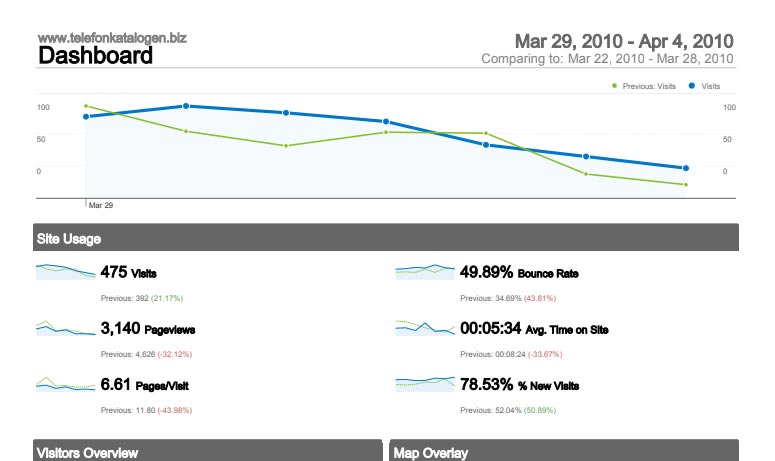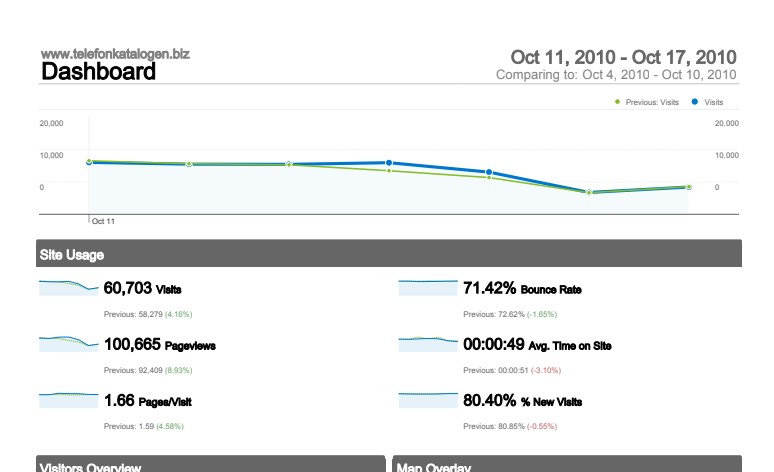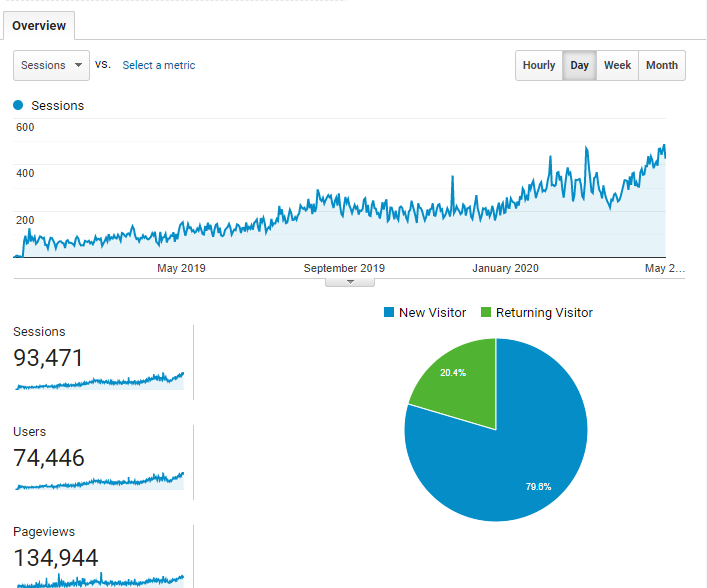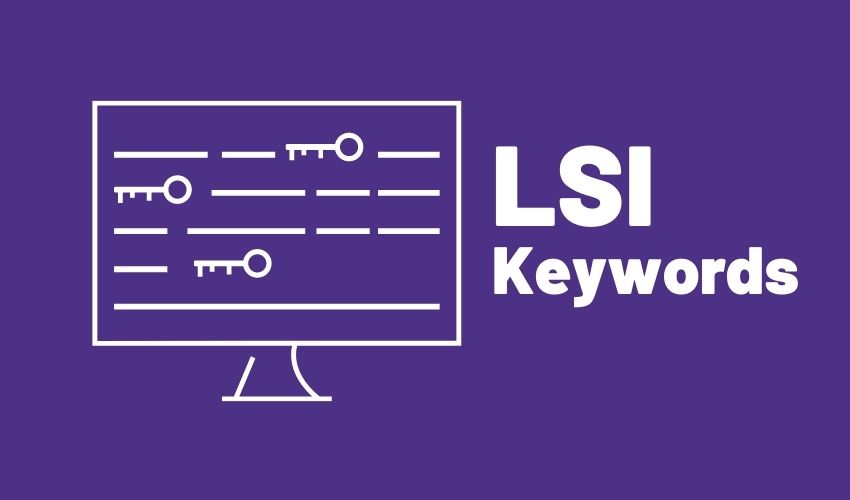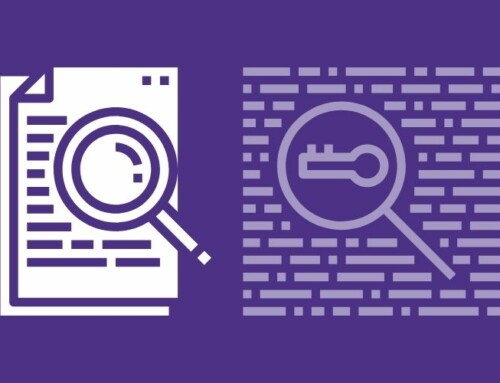We are all in search of something. Whether it’s the latest blog post, a new product to purchase, or just some wise words from someone who has been there before, we want what is best for us and we’re always looking for ways to find it.
One of the most important things to do in order to have a successful blog is to make sure that you are using keywords and LSI keywords.
The good news is, it’s not hard at all.
This article will show you how easy it can be to use LSI keywords for your blog posts – even if you’re new!
Table of Contents
What are LSI Keywords?
Do you know what LSI keywords are? If not, then this is the ultimate guide to understanding them and how they work.
LSI keywords (Latent Semantic Indexing) are a way of finding related words that may be relevant in your search. They help to provide more relevant results than searching for one word at a time. When using Google AdWords, Yahoo Search Marketing, or Bing Ads. These tools can also be used as part of your keyword research process by giving you more insight. It helps to know which words will attract an audience with similar interests.
If you are looking for LSI keywords on your own, it is helpful to have some general knowledge about a topic before beginning the process. This information will give clues about which words and phrases might be more relevant in search engine optimization (SEO).
If you’re trying to find LSI keywords without any prior knowledge about what they mean, this can seem like an impossible task. Yet, suppose you already own some basic understanding of SEO concepts. Such as topics that receive high traffic volume or low-quality content. In that case, these ideas may provide extra insight into where good keyword candidates arise from.
Read also: What are keywords and why do I need them?
How to find LSI keywords for your blog post?
Do you want to know how I find LSI keywords for my blog posts?
Do you know there are not enough words in the English language and that it is impossible to explain a concept with all of them? That’s why search engines use something called Latent Semantic Indexing or LSI keywords. What this means is that when someone types “how to start a blog” into Google. They’ll get other related phrases such as blogging software tutorials. The reason being these terms share similar meanings about blogs but have different word usage patterns. So, your articles will be ranked higher on searches for those topics! The only problem now becomes deciding which ones should go first- do we start by talking about setting up an SEO strategy from the beginning.
The first step in finding LSI keywords for your blog post is to identify your article’s focus. After picking a topic, you then need to use an online tool like Google AdWords. Else. SEMrush and type “keyword suggestion” into their search bar (or something similar).
The best way to find LSI keywords for your blog post is by using tools such as those found on google ad words, SEMrush, and so forth when doing research. The first thing that needs doing after selecting one’s desired keyword(s) is to write out each word with its definition. This helps generate ideas that can later become more specific results from within these mentioned resources.
How to use LSI keywords in your blog post
Does your blog have a hard time ranking on search engines? The secret is to use LSI keywords. These are used in content to help you better target the audience and get more exposure for your site.
The key to using LSI keywords is in the planning process. You should start by going through your ideas for topics on a similar topic level, then choosing one or two of them to turn into entire blog posts.
The best way to use LSI keywords in your blog post is to be an essential part of what’s being discussed.
Writing these types of blogs helps with search engine rankings and word counts.
Also, each page will contain related terms from other pages throughout the site. Moreover, external links may also help rank better and increase readership numbers!
In a blog post, you can use LSI keywords to classify the different topics and themes.
This will help your article rank higher on search engines.
Here’s how:
- Open up notepad.
- Write down all the words or phrases that come while writing.
- Underline each word.
- Find relevant synonyms for these terms.
- Highlight any single-word theme.
- Create an index.
- Please keep track of which one’s correlate with other categories.
- Figure out if they are necessary.
- Delete unnecessary items.
- Research everything else so it makes sense.
- Be creative!
Why you should use LSI keywords in your content
LSI keywords are a great way to catch your audience’s attention by showing them content they might find interesting.
Some people have found that LSI (Latent Semantic Indexing) keywords work best at catching their reader’s interest. This is when it comes time for producing engaging copy or web pages. These words can be researched and used in tandem with other terms you’re already considering using on a page. They will help readers see what kind of information is waiting for them below the surface level text – without having to click away from an article!
Understanding these word clusters will allow you to place them into different categories. Doing this helps people searching for specific search terms. Moreover, information about certain topics don’t get lost on pages unrelated to their goals!
- LSI Keywords help you organize your website content by grouping related phrases. Also, making sure users who want more detail aren’t left behind when navigating through confusing webspace.
- LSI keywords are essential for search engine optimization. They create rich and varied content, which increases the chance of your site being found in SERPs searches by Google or Bing.
- LSI keyword helps you gain ground with Google’s ranking algorithm – it would be wise to take advantage!
The benefits of using the right words when writing a blog post
Blogs can be a powerful tool for promoting your business but use the right keywords. You want readers interested in what you have to say and those looking for keywords they might search on, such as “dentist.”
As blog posts populate online and traditional media sources dwindle. Businesses need an outlet where their information will reach potential clients. Blogging has become one of these options because the owner controls how content appears through text or videos.
- The keyword here is control.
- Blogs give entrepreneurs creative license over whichever topics interest them most!
- They also provide opportunities not afforded by other mediums like interviews with journalists.
- The right keywords have the power to bring you traffic and more subscribers.
You can use any word in your blog post, but make sure it sounds good. If not, people may be put off by what they read on your site or get frustrated with how difficult it is for them to understand something that should be simple.
How to Add LSI Keywords in Your Content?
LSI keywords are a way of understanding the relevance between words. This is by leveraging their combinations and contexts. They’re particularly adept at predicting word pairs that have low frequency but high relevance.
Once you know how to add LSI keywords into your sentences, you can insert them throughout your content.
Here are four ways to insert LSI keywords in clear and concise text.
- For every piece of content, you should add two LSIs: This keyword and one other. Additionally, this can be any word that adds to the content’s value.
- Add LSIs to your meta descriptions: By including them in your meta description, you can reinforce the relevance of your page.
- Add long, specific keywords to your images: these relevant details work well as the alternative text of an image or its filename.
- Add LSIs to the heading tags: Including keyword-rich content in the <h2> and <h3> tags of your web pages are a strong signal.
These tricks can be used or in conjunction with one another, depending on the tone of your content. Remember to stay natural (write how you speak) and focus on short sentences to convey your ideas as possible.
Are LSI keywords the same as synonyms?
Some synonyms for a word can indeed be LSI keywords, but each term is evaluated. The vast majority of LSI keywords are related to your primary keyword, and not all synonyms will trigger these powerful results.
Examples of synonyms for the word “jacket” are “coat,”. But LSI keywords related to jackets include terms such as. Reversible, winter, feather down, warm, padded, and so on.
An excellent way to understand the difference between synonyms and related keywords is to perform a Google search. When you type a search phrase in the drop-down menu of the search engine, its suggestions are LSI keywords.
What are the advantages of using LSI keywords?
Hundreds of thousands of Google searches are conducted each year that have never been submitted. Google has implemented improvements to its algorithm so that it can better adapt keywords.
Improving the context of your content by adding LSI keywords can help with SEO and deliver bonus traffic.
- They improve your site’s ranking on search engines. Sprinkling LSI keywords throughout your text increase the effectiveness of search engines. This is by improving their understanding of what is on your web page.
- The use of semantic keywords will improve your content’s relevance. Related keywords will help ensure your content doesn’t become overloaded with keywords, which could cause it to rank.
- You can maximize your content’s readership by using related words. You can optimize your site’s content by using specific keywords for relevant topics. This raises the user experience and leads to higher ranking factors, such as time spent on-site and lower bounce rates.
What are the disadvantages of LSI keywords?
LSI keywords don’t have any disadvantages, but the indexing method has limitations. For example:
- It doesn’t account for the order of words, nor does it include any conjunctions or prepositions.
- It takes into account one meaning per word.
- The software will sometimes misinterpret the meaning of a sentence through either lack of understanding or defective irony.
The Impact of LSI keywords on SEO
In its early days, Google would find and scan website pages by crawling from one link to another on connected webpages. Once they trudged, the spiders would look at the keywords on a page to identify their topic.
For example, suppose you released a post titled “12 steps to create a content marketing strategy for your business” to Google for scanning. In that case, it will first consider the key phrases of “content marketing strategy” on your website.
- The title tag,
- Body content,
- Image alt text,
- H1, H2, and H3 sub-headings with accompanying text.
But Google’s crawling method changed with the introduction of LSI, resulting in these improvements:
| Crawling method | Improvement |
|---|---|
| Google has a deeper understanding of the meaning behind content. | Besides scanning your page for the main keyword, Google will now watch your page for other related keywords such as “email campaign,” “MailChimp,” “audience,” and so on. When someone searches for a topic, Google tries to determine what the subject is on that page. It relies on semantic indexing to understand the content of a document at a much deeper level than looking for many occurrences of a specific keyword. |
| Google reads pages to understand the content better. | Google’s algorithm has become capable of “reading” a page like a human would and categorizing keywords depending on the determined context. This includes being able to differentiate between words based on minor details. |
| Google can generate even more relevant results. | Google has come up with a new way to categorize words on the Internet. They identify words that occur together and use those as keywords so that engines can better understand what websites are about. This improved search results, making it even easier for users to find what they want. |
| Google takes a complete look at your business. | Furthermore, their algorithm considers the website’s business name and industry to establish a deep understanding of each page related to your company. |
You can now see the importance of LSI keywords to a search engine’s algorithm.
Google’s primary goal is to provide its searchers with the most relevant results when they Google. Even for the search terms that have never been searched before, Google attempts to provide an appropriate outcome.
That is a high standard of quality that the search engine would not match without latent semantic indexing.
Does YouTube use Latent Semantic Indexing (LSI) keywords?
It’s worth noting that Google only runs two search engines for their company and YouTube to find shopping ads, the other for general searches. On top of this, it seems that LSI keywords don’t have anything to do with rankings on YouTube at the moment.
When it comes to YouTube keywords, I only put primary keywords in my video titles and don’t pay much attention to LSI keywords at all.
The only place I can include these secondary keywords is in the video’s description, but their importance doesn’t seem high enough for me to do so. Adding LSI keywords to a YouTube search can help with finding related content.
YouTube SEO depends on high-quality editing to increase engagement. Also, the consequent click-through rate of its thumbnails. A universal accepted truth among professionals is that quality editing instead of LSI keywords. This is the most successful YouTube strategy for ranking videos in searches.
Although LSI keywords play a significant role on the Google search engine, they’re not as important in the YouTube search engine.
How to use LSI keywords for SEO
As discussed, these LSI keyword generators will provide your content with a long list of words for SEO benefits. Go ahead and alter your text to include them now.
How to choose the best LSI keywords for your topic.
Before you can figure out how to incorporate LSI keywords into your text, you must first identify the ones best suited for your topic. An example of this would be writing a blog post about SEO and prioritizing content related to “blog,” Google might spit out an endless list of keywords. including:
- SEO blog topics
- SEO blogs for beginners
- How to write SEO friendly post
- Blog SEO checklist
- SEO blog meaning
- Blog post SEO tips
- SEO latest trends
- What are the advantages of SEO?
- SEO plugins for bloggers
- Blog SEO for beginners
- How to optimize your post for SEO
Most of these are good (depending on the context).
Suppose you were creating a blog post for Word Stream on the benefits of blogging SEO. You would pair your keyword with phrases like “what are the advantages of SEO” and “blog SEO for beginners.”
Suppose you publish articles related to SEO and optimize content. Your keywords would be on the LSI phrase level (e.g., how to optimize your post for SEO) and at a more targeted keyword level.
Look at the total monthly search estimate.
Determining the best LSI keywords on your target phrases can be challenging as some suggestions are related to a completely different topic.
When this happens, you need to determine if the suggestion should be included as an individual article. Else, as an addition to this post. I rely on my keyword research to decide whether it’s worth writing a new essay or including the suggestion in an existing piece.
Conclusion
LSI keywords are a way to make your content more accessible by showing up in search results. They can help you rank higher and increase traffic, but it takes time for them to show up on Google’s algorithm. The goal is that because they’re doing the work of figuring out what people want. We should create better content and get closer to satisfying our customers’ needs – making us all leaders in this digital marketing game! If you have any questions about how LSI works or would like some advice on which terms will best suit your business goals, contact me at [email protected]. I’m happy to answer any queries or give personalized feedback so that you can continue being a leader online.
FAQs
What are LSI keywords?
LSI keywords are search words related to your primary keyword. Tags can provide context to your content and help you optimize for search by both people and Yahoo’s web crawlers.
How would one go about finding LSI keywords for SEO?
One of the easiest ways to find your LSI keywords is through Google Search. For example, if you google the phrase “website,” you will find relevant search terms and LSI keywords.
What is the function of LSI?
Latent semantic indexing is a system used by search engines that analyzes the words in articles on a subject. It is determined based on how high the correlation an article has to the target keyword.
Which tool is famous for extracting LSI keywords?
- KeywordTool.io
Keyword Tool is the most popular keyword research program in the industry. It offers free long tail and latent semantic indexing keywords from the Bing ads, YouTube, Google Suggest, Amazon, App Store, and Google.
How do I use LSI keywords?
There are many ways to revive old content that may have lost ranking. One way is by adding LSI keywords to the primary keyword phrase. Adding these supplementary words will help Google find your content and rediscover it after years of disuse.
Share This Story
